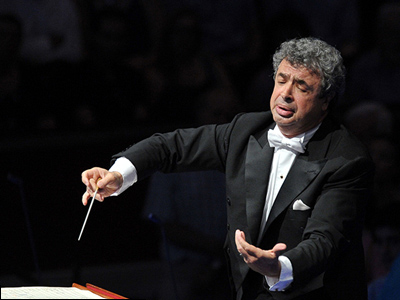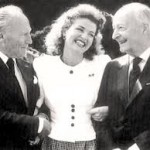by Edna Landau
To ask a question, please write Ask Edna.
Over the summer months, I had the opportunity to speak with a number of young people who are currently working in artist management, as well as others who have moved on to different areas of the classical music business. Having felt for a long time that we are not doing enough to nurture the next generation of artist managers, I asked for their opinions and suggestions. Overall, they tended to concur with my supposition; however, they all felt that the situation could be improved despite changes in the industry and the minimal profit margins that many artist managements face. The most immediate problem for those entering the field is the limited opportunities for upward mobility. They often have a music background and are willing to start at a low salary with entry-level responsibilities, with the hope that their situation will improve before too long. They soon learn that there is no built-in system for advancement, and that promotions are often dependent on someone leaving the company since the budget rarely allows for adding new positions unless there are significant new artist signings or touring attractions. What can make a real difference during this indefinite “apprenticeship” period is if those senior to them take advantage of opportunities to inspire and mentor them in ways that will nurture their talents and groom them for future higher positions within the company as they open up. Often this doesn’t happen and when word gets out to other agencies about their promising potential, they are snatched away at a higher salary (which might only be $2500 to $5000 more). Might there not have been a way to trim the expense budget enough to hold on to them? The process of training a new person can be lengthy and time-consuming, and there is always the danger of a dip in morale with staff departures. How can we do a better job of nurturing and mentoring gifted younger talent to avoid the disruptions that regular turnover causes in our businesses? Here are some ideas that we came up with together:
Senior staff should check in on junior employees at least once a week to see how they are doing. They should make sure to offer praise for work well done. They should inform them when visitors might be coming into the office and make every effort to introduce them to one another. Just about everything in the artist management business revolves around personal relationships. People at every level will work harder if they get to meet people with whom they interact on a regular basis. It should go without saying that every individual who works on behalf of an artist at any level should have the opportunity to meet that artist when they visit the office.
If possible, managers should give their associates/assistants opportunities to listen to conversations that might be particularly enlightening (at least to one side of the conversation, if using a speaker phone is awkward). There is no better way to learn how to negotiate fees than to eavesdrop on a manager adroitly navigating their way through a demanding negotiation. Managers should also share with their assistants details of some of the challenges they have been encountering, asking how they might have dealt with such challenges and leaving ample time for questions. Once managers and their assistants have worked together for a while, it becomes especially meaningful if they invite them to artist meetings. It demonstrates to the artist that they have a team to turn to at all times and it is very gratifying to the assistants to feel trusted in this way. An additional way to convey a sense of trust is to give the assistant a small project to handle on their own, with the prior understanding of what is to be undertaken and the desired goal. Constructive feedback (and hopefully praise) at the end of the project helps enormously to build confidence and a sense of achievement.
An incalculable amount can be learned by being cc’d (or blind copied) on e-mails. When Charles Hamlen and I headed up Hamlen/Landau Management and later IMG Artists, we circulated our daily correspondence to anyone who felt inclined to read it. Managers tend to travel a great deal and sometimes it can be difficult to keep up with everything while on the road. An informed junior colleague will be up to date on their activities and will be familiar with their style of dealing with artists and presenters—a great advantage during the manager’s absence.
No matter what challenges crop up on any day, it is important for the senior artist manager to present a positive and upbeat demeanor to junior employees. If they often come across as exhausted and frustrated, they could seriously cause a young colleague to wonder if this is a direction they should personally be contemplating. All of us who have spent a great deal of time in the artist management business and the classical music industry in general undoubtedly feel that the joys of our work far outweigh any possible drawbacks. Our only hope in attracting new gifted talent to the field is to demonstrate that joy and communicate it regularly to those around us.
In thinking about colleagues of mine with the greatest longevity in our business, I was drawn to contact R. Douglas Sheldon, the greatly respected Sr. Vice President and Director of Columbia Artists Management Inc. (CAMI). He kindly agreed to meet with me and share some personal insights gained over 47 years with the company. He came to CAMI in 1966 from the Rochester Philharmonic and started out as the Midwest booking representative. There was no formal training but he learned from watching Ed Kneedler, who ran the booking department, and later from Sheldon Gold and Ronald Wilford. He also cites as mentors such legendary presenters as John Edwards (Chicago Symphony), Bill Dawson and Fan Taylor (both managers of the University of Wisconsin cultural presentations), Al Edgar (with whom he founded the Ames International Festival in 1969) and Chicago impresario, Harry Zelzer. After four years, Mr. Sheldon became Director of Booking, a position he held until 1979. His subsequent work has focused on management of leading artists and orchestras, as well as developing younger talent. Anyone who comes in contact with Doug Sheldon surely has no doubt of his total dedication and passion for the business, which must have played a big role in keeping an associate such as Mary Jo Connealy working alongside him for 25 years (until her untimely death in 2005). She began as his second secretary, handling itineraries, logistics and tour budgets, but brought with her a strong musical training and an acute ear for talent. In her seventh year at CAMI, he asked her to travel with violinist Anne-Sophie Mutter for three Canadian dates during a recital tour. The respect that had begun to develop between the two solidified during that time and led to close work together over many years, yet at no point did Ms. Mutter question Mr. Sheldon’s ongoing dedication to her and the development of her career. Ms. Connealy went on to become a Vice President and beloved artist manager at CAMI.
Doug Sheldon spoke to me about young people applying for jobs at CAMI today. Their first question is often about the path for promotion at the company. He tells them that there is no “path,” but offers to introduce them to a good number of people who started at the most basic entry level and now occupy significant positions. He explains that they succeeded in earning the company’s and its artists’ confidence and created their own path. I asked how he personally helped some of them along the way. He spoke of the importance of sharing information, philosophy and context. He further explained that there is no point in asking someone to handle their first fee negotiation if they don’t possess background on the artist and presenter and understand the significance of the date and the depth of the relationship that led to the negotiation. He was also quick to add that one should always remain open to hearing from younger colleagues as “their ideas can be better than your own.”
Doug Sheldon spoke of his team of six as “helping him accomplish what he could never do on his own.” For that reason, he feels they should know as much as possible about his work. He has daily interaction with them and they have total access to his e-mail correspondence. One imagines that with this style of working, everyone wins. I recall attending Doug Sheldon’s 60th birthday party during which Zarin Mehta, among others, made a toast. He said that he could sum him up in just one word: integrity. I am sure that all of us who have been privileged to work in the artist management field for a long while strive to bring integrity, first and foremost, to everything that we do. We must dedicate ourselves to sharing that goal with our younger colleagues and give them the tools with which to achieve it.
To ask a question, please write Ask Edna.
© Edna Landau 2013
Please note that this column will henceforth be posted biweekly.


